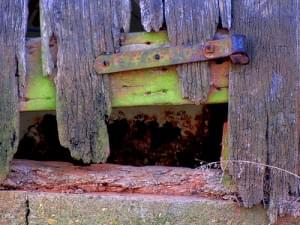Door Hinges: The In's and Out's Of Your Homes Out's & In's
There are aspects of home renovation that are exciting and rewarding, after all you are deciding on the surroundings you and your family will be living in for some time to come. But then again, there are also the more mundane details that need to be taken care of. To us at UK Oak Doors there's nothing better than the sweet action of a hand forged T Hinge but we know that to most, door hinges are like the tyres on a Ferrari, substantially less exciting to discuss than the thing they're attached to.
Whilst one article is unlikely to turn the general public on to the buzz of a perfectly crafted piece of ironmongery it can at least help with the 'ins and outs' of the bits in your house that let you out and in. So here is our guide to the specifications and differences between door hinges so you can buy the right ones for the right doors and doorways.
Hinge Styles
| Hinge Type | Description |
|---|---|
| Butt Hinges | The most common type of hinge, designed to be sunk into the door and frame. Can handle heavy oak front doors. |
| T Hinges | Designed for barn style doors, with a long arm that attaches to the face or back of the door. Exposed arm makes them a decorative feature. |
| Butterfly Hinges & H Hinges | Fit similarly to butt hinges, offering a classic feel to a doorway when T hinges are unsuitable. |
Butt Hinges

Butt hinges are the most conventional type of door hinge. They are designed to be sunk into the door and frame so that when closed, only the hinge 'knuckle' can be seen. Butt hinges can be heavily engineered to handle the weight of heavy oak front doors, providing ample security. For front or back doors, we recommend 4" butt hinges. Ledge and braced doors may not always accommodate these hinges, but our special small butt hinge will work with our ledge and brace door. A decent pair of 3" butt hinges is sufficient to hang one of our internal solid oak doors. Using three hinges per door is not necessary.

T Hinges

T Hinges are familiar to the country cottage style look. They were designed to fit barn style doors and have a long arm that can be attached to either the face or back of the door. The exposed arm makes these door hinges a 'feature' rather than being just a functional item. As a rule of thumb, you want the hinge to come out approximately halfway across the door. For a 2ft 3 or 2ft 6 door, opt for a 15" T Hinge. If you have a wider 2ft 9 or 3ft door, then the 18" T Hinge is probably for you.
Butterfly Hinges & H Hinges

Butterfly Hinges and H Hinges fit in a similar way to butt hinges and can be seen as a way of giving a more classic feel to a doorway if T hinges are unsuitable.
Things To Consider
- Door Weight – Some traditional ironmongery hinges are designed for internal doors. They are meant to be used in pairs, while other hinges can be used in threes to share the weight of a heavy oak front door. Keep in mind that wide doors will place relatively more stress on the hinges than narrower doors of the same weight. This is because the further away from the hinge the weight is placed, the heavier the load becomes.
- Type of Use – Doors that are likely to experience high usage should be fitted with door hinges engineered to handle the strain. Something like a stainless steel hinge with ball bearings will allow smoother operation for longer.
A Simple Checklist
When choosing your door hinges, consider the following factors:
- Internal or External Setting? – Insurance companies will insist on minimum standard hinges for external doors, while internal doors are lighter and allow for greater choice. External solid oak doors are heavy and require heavy-duty hinges. The 4" stainless steel butt hinges are perfect for external use.
- Type of Door? – Consider whether the door has a modern or traditional feel and choose hinges that accompany the style accordingly.
- Function? – Determine if the door will experience low, medium, or heavy usage.
- What type of finish suits the doorway and surroundings? Handmade ironmongery from UK Oak Doors, for example, comes in an antique beeswax finish rather than a cheap black powder coating available elsewhere.
For the full range of door hinges available, please visit the UK Oak Doors website.
Information is accurate at the time of publishing; however, it may be subject to change.


